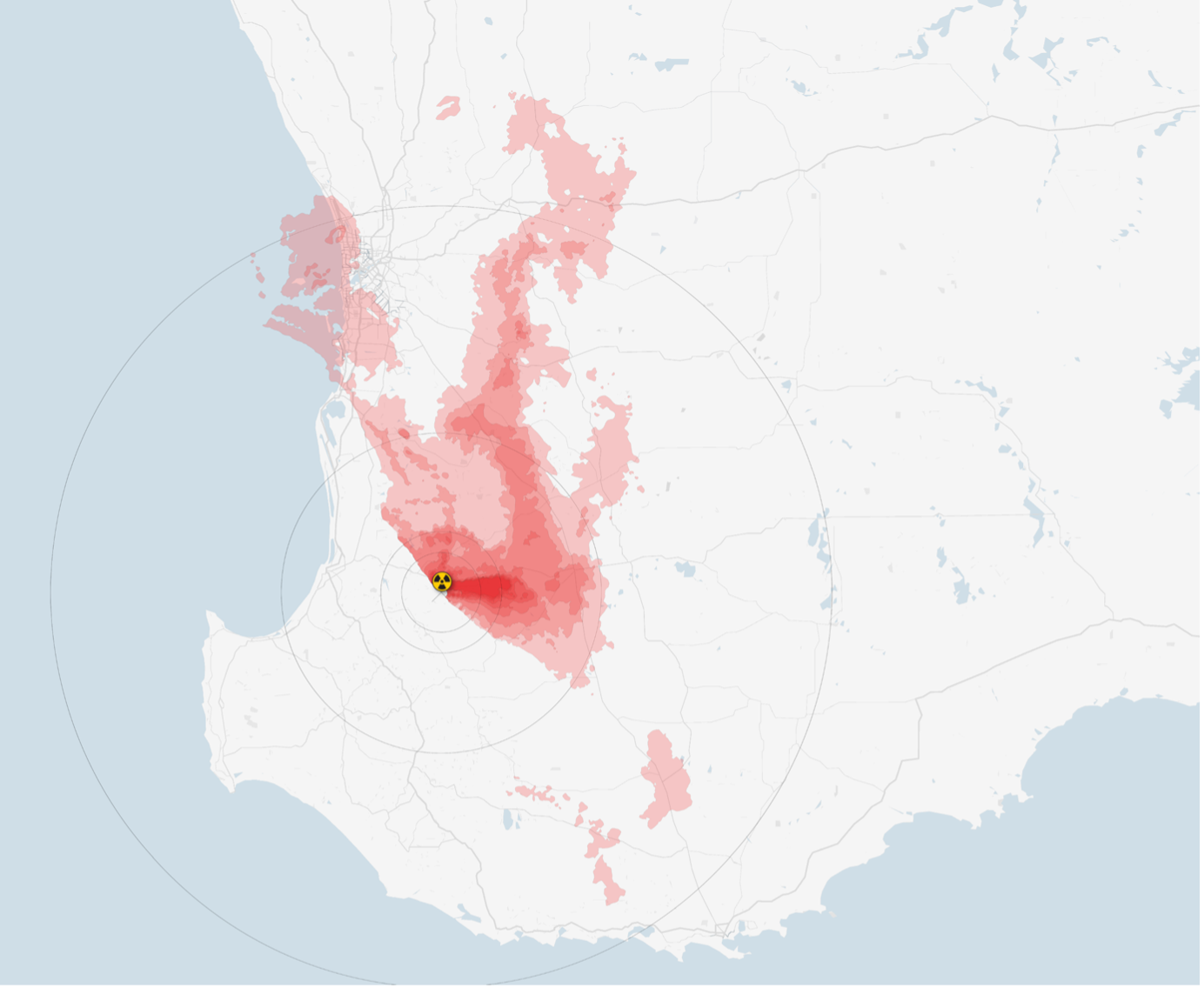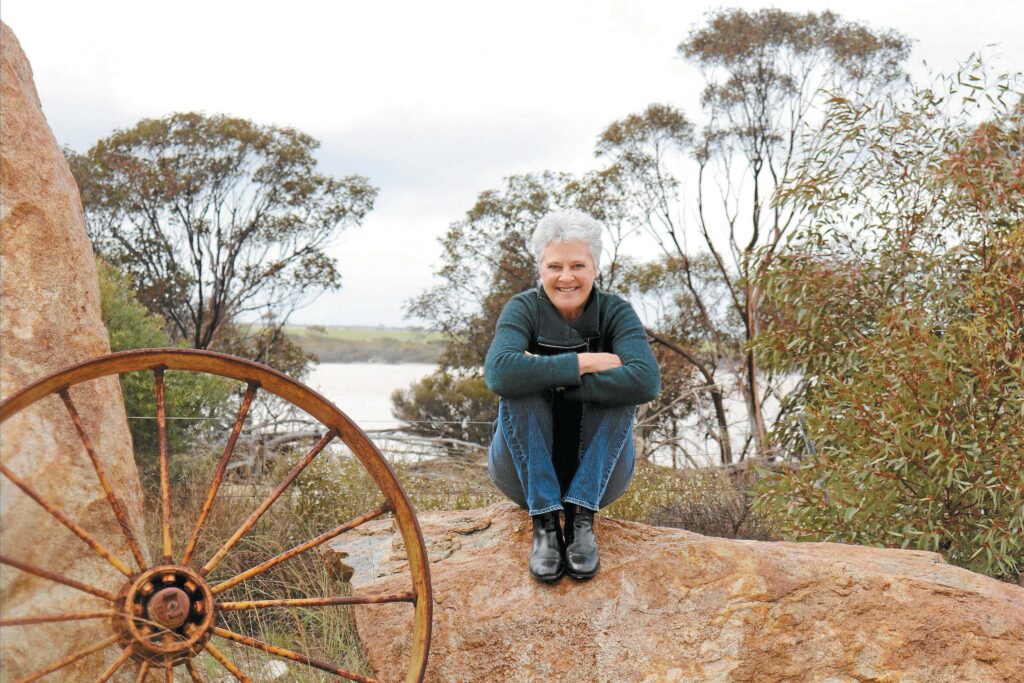The plume map shows where the nuclear fallout at the proposed Muja site could, theoretically, spread in the event of a disaster based on the fallout from Fukushima.
Liberal MP Rick Wilson this week slammed the Prime Minister’s visit to Collie Battery Energy Storage System (CBESS) as an empty photo opportunity.
Mr Wilson MP has held the regional Western Australian seat of O’Connor since 2013.
He claimed Mr Albanese conducted the press conference at CBESS merely to spread lies about the Coalition’s Nuclear plan.
“Mr Albanese continues to lie in claims that the Coalition’s Nuclear plan would cost the taxpayer $600 Billion,” Mr Wilson said.
Dutton in Collie
He said the PM had also claimed that Liberal leader Peter Dutton had not bothered to travel to the seven proposed nuclear sites across the country, “including Collie in my electorate.”
He pointed out that Federal Opposition leader Peter Dutton travelled to Collie in October last year, and Shadow Minister for Climate Change and Energy Ted O’Brien was in Collie in July, to consult with local stakeholders.
This played to the common Coalition criticism of the Labor Party that it lacks drive in regional consultation.
“Anthony Albanese didn’t even notify the Shire of Collie he was coming to town,” Wilson said, “let alone have a genuine conversation about the future of the Collie community.”
Nuclear doubts
The O’Connor MP suggested that “the facts are that the Coalition Nuclear Plan would be $263 Billion cheaper than Labor’s Renewables-only plan,” and that Frontier Economics modelling has the cost at $331B.
However, Frontier’s costings have come under fire from multiple sources since their release.
An extensive evaluation by the Clean Energy Council (CEC), ‘Analysis of Frontier Economics’ ‘Economic analysis of including nuclear power in the NEM,’ said Frontier’s figures included an unsafe assumption nuclear power plants can be built and operating by 2036.
Frontier figures based some forecast calculations on two different electricity demand profiles for the economy to 2050, the CEC complained.
CEC also decried the modelling as having an unrealistically low representation of the total system costs associated with nuclear, and spread them out over a 50-year period.

Low nuclear construction and operation costs based on estimates that were far lower than other recent international experience and independent analysis, were also cited as unrealistic by the CEC.
Mr Wilson said under the Liberal Party nuclear plan 38% of Australia’s energy mix in 2050 would comprise nuclear, just 25 years away.
Fifty-four percent would be renewables and the rest a mix of storage and gas.
RE-Alliance has been working with regional communities regarding energy projects for over a decade.
Last month National Director RE-Alliance Andrew Bray told the Esperance Weekender the group had found that across several proposed nuclear communities, only marginal support for nuclear reactors existed.
“The polling of 1250 regional residents was conducted by research firm 89 Degrees East, which is a member of the Research Society of Australia,” Mr Bray said.
In WA’s south-west, where Collie is situated, the data showed less than a quarter of people support nuclear power, he said.
He identified similar disinterest, or less, in Central West NSW (22%) and Central Qld (24%), rising to almost a third of people in Gippsland (31%) and Hunter (33%).
As much as 87% of those polled thought nuclear power would not reduce their bills “anytime soon,” but 72% considered “renewables would bring bills down faster.”
He said, “an extra 200 gigalitres of annual water allocation would need to be acquired from farmers and other water customers to cool the proposed nuclear reactors,” according to a report released by former Land and Water Australia CEO Professor Andrew Campbell.
“Half the reactors couldn’t be built because there isn’t enough water to cool them and another 40% would have to be turned off regularly due to lack of water,” he said, citing the report.
The member for O’Connor’s statement came out the same week that the 40th anniversary of the Chernobyl nuclear disaster was solemnly observed by the Conservation Council of WA.
The recent collision of a drone at Chernobyl came perilously close to piercing the toxic site’s containment layer, Acting Executive Director Ms Pepper said.
Ms Pepper added it was “a sobering reminder of the ongoing threat nuclear reactors pose across generations well into the future,” and that the effects of the disaster would remain for tens of thousands of years.
Proposed WA reactors would be a risk to towns all over the state, she said.
“Modelling has shown that if there was an accident at the proposed Muja (nuclear) site in Collie, the impacts could include permanent evacuation for all residents within 30km of the site, with radioactive contamination stretching all the way to Perth, Margaret River and Denmark.”
Dutton’s costings were “wildly inaccurate and misleading to voters,” said former Greens MP Giz Watson, a candidate in Mr Wilson’s electorate of O’Connor in Saturday’s Federal election.
“It’s a mirage designed to keep fossil fuel companies in business for as long as possible.”
Ms Watson said the Coalition’s nuclear build costings are underestimated by $16-$46 billion, according to the Climate Council.
“The coalition hasn’t factored the full cost of fuelling and operating reactors – add another $5 – $20 billion.”
“Another $308 billion is needed to account for the cost of delaying decarbonisation by 10+ years (estimated 1.6 billion tonnes of climate pollution),” she said.




